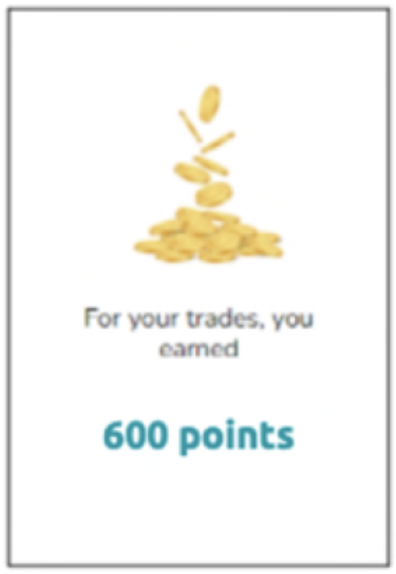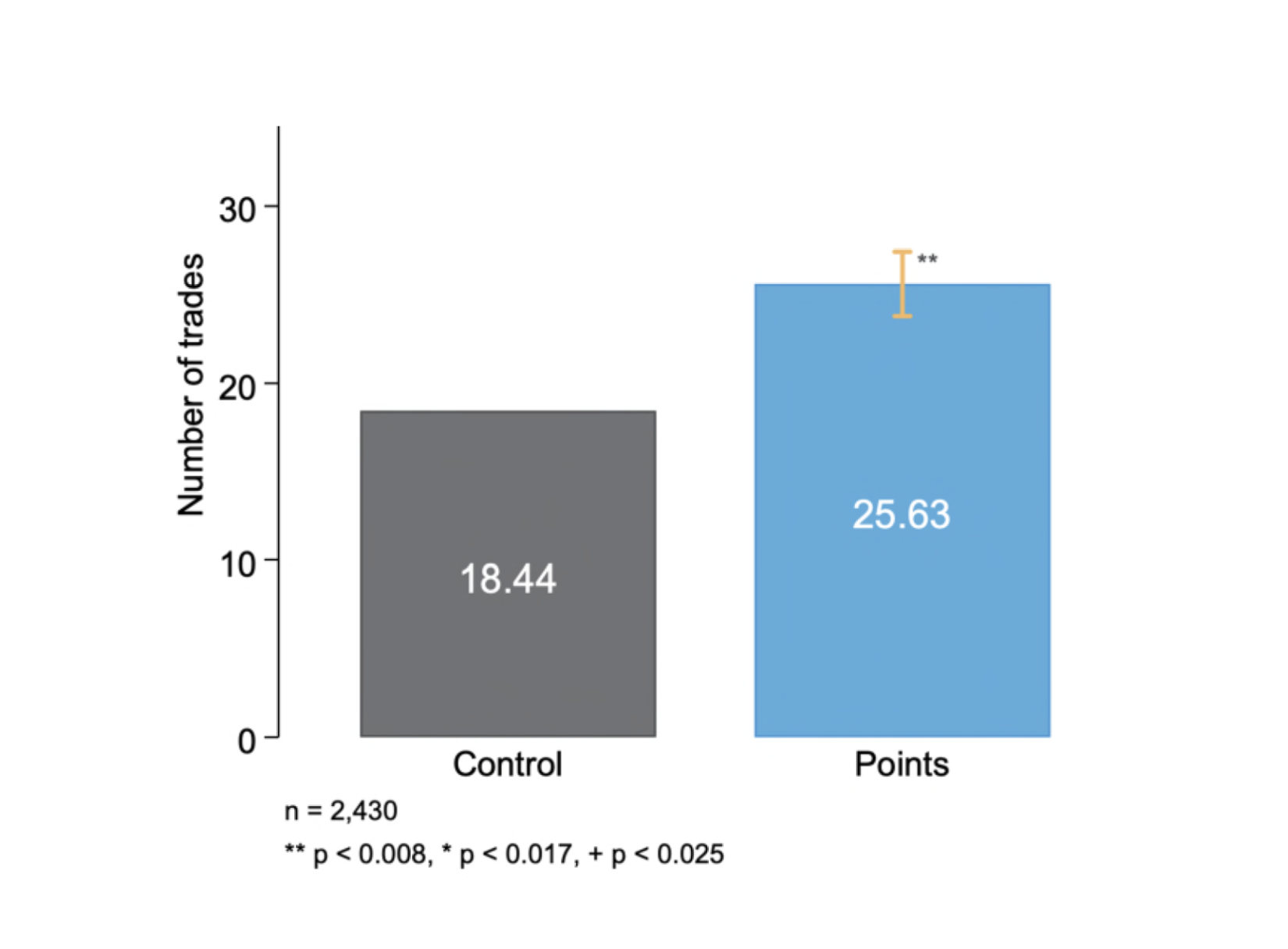When it comes to investing in stocks, in general, the less you trade, the better you do. This may seem counterintuitive, but the evidence is clear: a “buy and hold” strategy usually yields higher returns than frequent trading. However, millions of retail investors using digital stock trading platforms are being subtly encouraged to trade more frequently (and to make riskier trades) than they should.
Our recent research with the Ontario Securities Commission (OSC) found that gamification tactics can have a strong impact on DIY investors, encouraging them to increase their trading frequency even when doing so is not in their best interest. Securities regulators have a major opportunity to use behavioural science research to combat these tactics and protect consumers.
Gamifying Investing
Gamification includes a variety of behavioural techniques that integrate game design features into non-gaming contexts. Gamifying an action makes it more appealing. In some contexts, this can be really beneficial. For example, gamifying education has been shown to keep learners motivated and engaged.
While mobile-first trading platforms have expanded market participation, they are also using gamification tactics to increase platform engagement in ways that create significant risks for the investors using them.
From confetti animations celebrating completed trades, to social media-style features that let users copy the trades of others, gamification is expanding rapidly. This development presents a tough challenge for securities regulators, as these tactics are hard to define and detect.
Defining and Testing Gamification
To improve investor protection, we worked in close collaboration with the OSC to define gamification techniques relevant to online retail investing, consolidate the limited existing evidence on their impact, and review how 12 trading platforms in the US and Canada are using them.
We then ran a randomised controlled trial to see how two of these tactics influence investors’ trading behaviours. One part of the study tested whether giving investors nominal “points” for buying or selling stocks increased trading frequency. It did—by almost 40%.
Virtually Worthless Reward Points Led to 39% More Trading
We created a simulated investing platform where participants bought and sold six fictional stocks over eight rounds of trading. Thousands of Canadians participated and were compensated for completing the study. To incentivise thoughtful trading amongst participants, we let them know that the larger their final balance, the more they would be paid.
In one of the conditions of the trial, participants received reward points every time they made a trade. The points were linked to their actual compensation, but had a negligible value of $0.075 at most.
Nonetheless, these virtually worthless points had a very large effect on behaviour. Compared to participants in the control group, who didn’t experience any gamifying tactics, investors in the reward points condition traded 39% more.

Building Evidence to Protect Investors
Increased trading frequency generates more income for trading platforms, but has a negative effect on retail investors on average. The DIY investors who are more likely to use gamified platforms are also more vulnerable in terms of their financial security, as these platforms tend to focus on acquiring young, lower net-worth clients. About 50% of customers using one prominent US trading platform are investing for the first time.
Our research shows how significant an influence gamification can have on investors. We strongly recommend that regulators globally continue to build this evidence base so that they can take informed action to protect consumers in this evolving landscape.
As platforms use more behavioural strategies to increase their revenue in potentially damaging ways, the more we need to use behavioural science research to safeguard investors. Read our full report for a gamification taxonomy, details on our trial, and more.
If you’d like to discuss this work—or ways we can help you use Behavioral Science to inform regulation—please get in touch.






